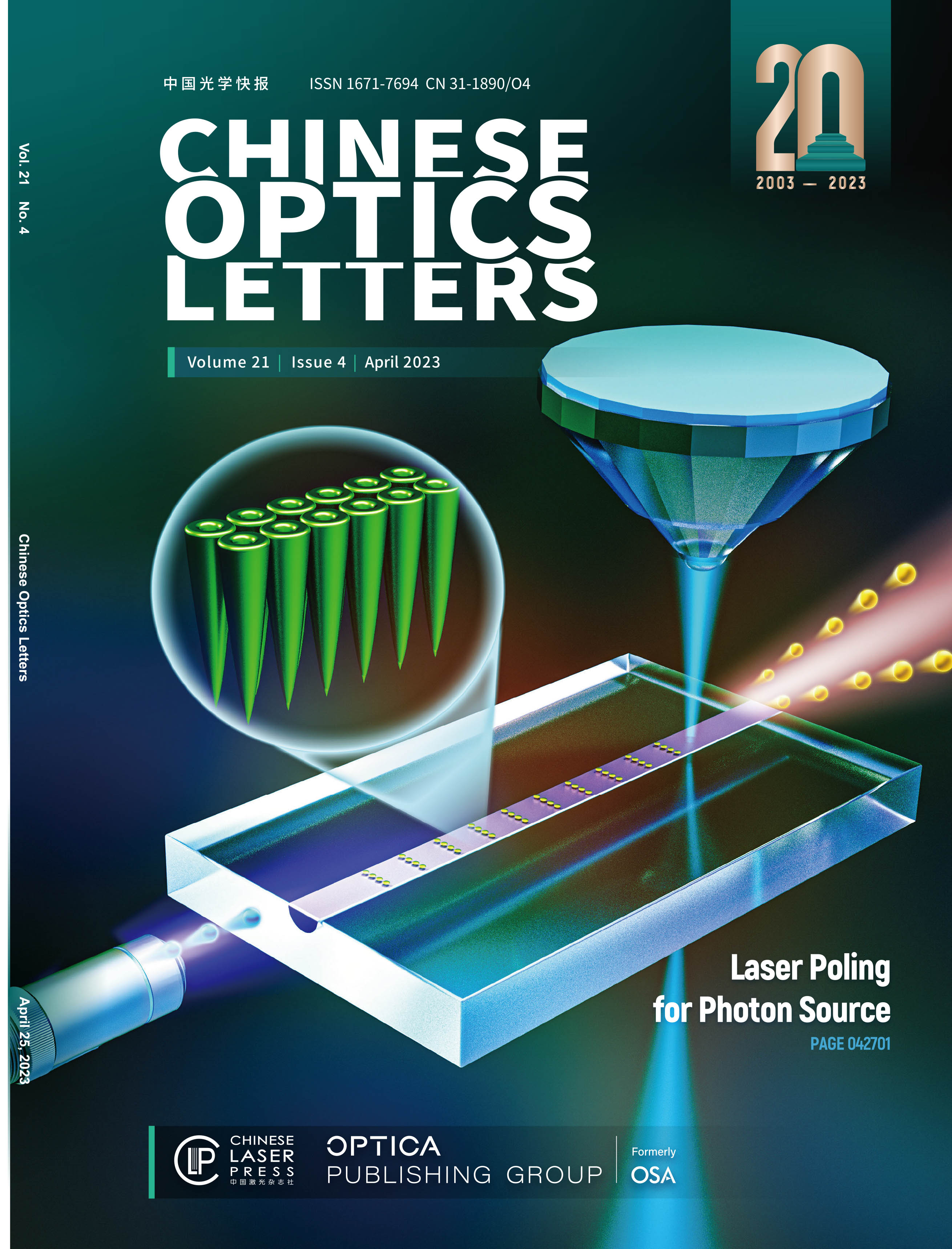Journals >Chinese Optics Letters
- Publication Date: Mar. 09, 2023
- Vol. 21, Issue 4, 040601 (2023)
- Publication Date: Mar. 24, 2023
- Vol. 21, Issue 4, 040602 (2023)
- Publication Date: Apr. 06, 2023
- Vol. 21, Issue 4, 041201 (2023)
- Publication Date: Apr. 03, 2023
- Vol. 21, Issue 4, 041202 (2023)
- Publication Date: Mar. 14, 2023
- Vol. 21, Issue 4, 041203 (2023)
- Publication Date: Apr. 04, 2023
- Vol. 21, Issue 4, 041204 (2023)
- Publication Date: Mar. 15, 2023
- Vol. 21, Issue 4, 041205 (2023)
- Publication Date: Apr. 10, 2023
- Vol. 21, Issue 4, 041401 (2023)
- Publication Date: Apr. 06, 2023
- Vol. 21, Issue 4, 041402 (2023)
- Publication Date: Apr. 03, 2023
- Vol. 21, Issue 4, 041403 (2023)
- Publication Date: Mar. 15, 2023
- Vol. 21, Issue 4, 041404 (2023)
- Publication Date: Mar. 14, 2023
- Vol. 21, Issue 4, 041405 (2023)
- Publication Date: Mar. 09, 2023
- Vol. 21, Issue 4, 041406 (2023)
- Publication Date: Apr. 04, 2023
- Vol. 21, Issue 4, 043801 (2023)
- Publication Date: Mar. 31, 2023
- Vol. 21, Issue 4, 043802 (2023)
- Publication Date: Mar. 14, 2023
- Vol. 21, Issue 4, 041901 (2023)
- Publication Date: Mar. 14, 2023
- Vol. 21, Issue 4, 041601 (2023)
- Publication Date: Mar. 15, 2023
- Vol. 21, Issue 4, 041602 (2023)
- Publication Date: Feb. 21, 2023
- Vol. 21, Issue 4, 041603 (2023)
- Publication Date: Apr. 04, 2023
- Vol. 21, Issue 4, 041604 (2023)
Sb-doped
- Publication Date: Apr. 10, 2023
- Vol. 21, Issue 4, 041605 (2023)
- Publication Date: Mar. 10, 2023
- Vol. 21, Issue 4, 042601 (2023)
- Publication Date: Apr. 06, 2023
- Vol. 21, Issue 4, 042701 (2023)
- Publication Date: Mar. 24, 2023
- Vol. 21, Issue 4, 042702 (2023)
- Publication Date: Apr. 06, 2023
- Vol. 21, Issue 4, 043001 (2023)












